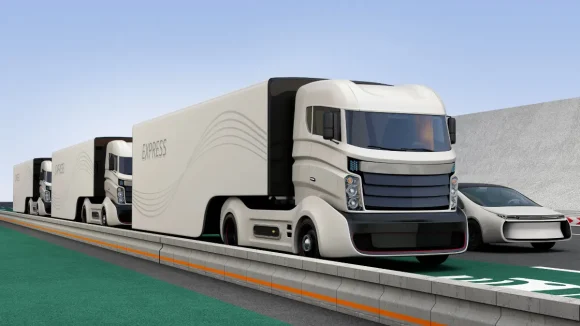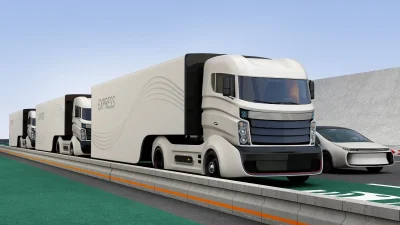The contentious debate to include heavy-duty autonomous trucks on California’s highways is climaxing. While the outcome remains uncertain, governor Gavin Newsom favors advanced technology over organized labor.
At the center of this debate is Assembly Bill (AB) 316, a proposal that could effectively end the testing and commercialization of autonomous trucks weighing over 10,001 pounds (about 4,536kg) without a human driver present. The bill successfully passed through the Assembly in May, and its fate now hinges on a closed-door Senate hearing scheduled for next Friday.
Should it proceed, Newsom will be tasked with making a pivotal decision: either veto the bill or seek a middle-ground compromise.
Newsom’s stance unclear.
Though Newsom has yet to express his personal viewpoint, a letter from the Governor’s Office of Business and Economic Development to AB 316 sponsor Cecilia Aguiar-Curry provides insight into his leanings.
The letter suggests that Newsom is leaning toward supporting advanced technology.
It states that the bill is rigid in regulating an emerging industry from California’s innovation-driven economy. It emphasizes that existing checks and balances, including oversight from various entities, exist to ensure safety and regulation.
California has a history of early involvement in autonomous vehicles. In 2012, it approved the deployment of light-duty autonomous vehicles and trucks weighing less than 10,001 pounds. However, the consideration of heavy-duty trucks was postponed until recently, sparking the introduction of AB 316. Despite similar bills being introduced in seven states during the last legislative session, AB 316 is the only one gaining traction, primarily in California.
There are concerns
However, proponents of the bill, led by the Teamsters Union, assert that its passage is vital to address potential job losses and safety concerns linked to autonomous trucks. But there are concerns.
Recent mishaps involving autonomous cars in San Francisco, such as collisions with fire trucks and vehicles stationary on the road, have further fueled opponents’ arguments. The California Department of Motor Vehicles even required one autonomous vehicle developer, Cruise, to halt half of its San Francisco fleet pending an investigation.
Electrification is inevitable
In a recent move that intensified the dispute, the California Public Utilities Commission (CPUC) approved Cruise and Waymo’s ability to offer autonomous rides for a fee. This decision, which clashed with organized labor interests, prompted opposition from San Francisco officials and escalated tensions.
Newsom’s inclination toward advanced technology is grounded in the belief that California’s innovation-driven economy should not be stifled.
Beyond autonomous trucks, the transition to electromobility is a challenge that many fleets are grappling with.
Volvo Trucks North America has introduced its Turnkey Solutions program, aimed at simplifying fleet management and procurement processes for the transition to electric Class 8 trucks.
Other manufacturers, such as Daimler Truck North America, Kenworth, Peterbilt, and Navistar, provide comprehensive support for customers transitioning to zero-emission vehicles.










